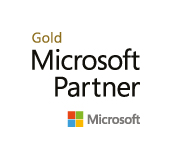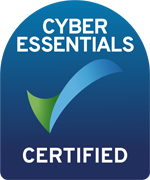De-constructing the Mystery Around Tech Talk
Published: 20 November 2023

Do you know your IP from your IPS? Are you at a loss as to what a firewall is? And do you draw a blank when it comes to end point protection?
Here at Lifeline IT, we admit that tech-speak can be confusing, even for techies like ourselves. But often IT terms and phrases are quite simple when explained properly.
A firewall is a security appliance on your network or software on your computer or laptop that helps prevent unauthorised or malicious access. The firewall inspects incoming and outgoing traffic using a set of security rules to identify and block threats. Before it was a computing term, firewall was initially a physical wall intended to confine a fire within a line of adjacent buildings.
Wi-Fi
This is a term that can be confused with the internet. Wi-Fi is a wireless signal used to connect devices within a limited range, such as a home, office or public place. Internet however is a global network that connects devices around the world through a network of servers, routers and other infrastructure. People often think the Wi-Fi is not working or ‘down’ when it is actually a problem with the internet.
ISP and IP Addresses
ISP stands for ‘Internet Service Provider’ – this is an organisation that provides services for accessing and using the internet. It can be a commercial company, such as Virgin Media, Talk Talk or BT, or it can be a non-profit organisation. An Internet Protocol (IP) address is a unique set of numbers that refers to your device’s location on the internet or your network and is used to route information.
End-to-End Encryption
This is a private communication method in which only communicating users can participate – this means no one, including the system, internet or telecom provider and cyber attackers, can access this communication. An example of end-to-end encryption is WhatsApp, where messages are secured with a lock and only the sender and recipient have the special key to unlock and read them.
Two-Factor Authentication (or Multi-Factor Authentication)
This is becoming a standard identification process to increase security when accessing everything from bank accounts and service providers, through to social media and healthcare accounts. It works by requiring two separate and distinct forms of identification – the first factor is a password, something you know, and the second factor is your device, something you have, to which a code is sent or on which a dedicated authentication app is installed. The second factor could also be a USB device or a keypad and your bank card.
Endpoint Protection
A less well-known term, endpoint protection (also known as endpoint security) is the monitoring and protecting of ‘endpoints’ against cyber threats. Endpoints includes desktop computers, laptops, smartphones, tablets and other devices – normally the last or “end” device in a chain of communications or networks.
SHARE POST
CONNECT
REPORT AN INCIDENT
To access the Lifeline IT support portal and log an incident, please click the button below or phone us on 020 8238 7838.
GET IN TOUCH
Email: [email protected]
Tel: 020 8238 7838
Head Office Address
Unit 8 Stirling Industrial Centre,
Stirling Way, Borehamwood,
Hertfordshire, WD6 2BT
STAY UPDATED
Sign up to our newsletter for informative news about the IT and technology landscape











 This uses the new tabs module, so we can style it however we want using our built in design controls!
This uses the new tabs module, so we can style it however we want using our built in design controls!
 And of course you can add images or whatever you want here too.
And of course you can add images or whatever you want here too.



